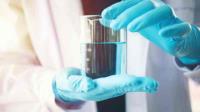 Add My Company
Add My Company
Sign In
Debugging the effluent
01-08-2019

Effluent decontamination systems are critical to the safe operation of a contained facility. Microorganisms can easily find their way into waste liquids and disinfectants are toxic, so what is the best way to manage it? Astell's Paul Birchmore explain
Microbiological containment laboratories across Europe (government, healthcare or pharmaceutical production facilities) must meet the requirements of the Biological Agents Directive, and in the UK this means complying with the Control of Substances Hazardous to Health (COSHH) Regulations. For those unfamiliar with containment levels, these are summarised in Table 1.
Whatever containment level is in force, there is always a potential risk for release of active agents into the environment. Since microorganisms can easily find their way into waste liquids, decontamination of effluent prior to discharge is crucial.
Making your effluent safe
Effluents can include sanitary waste from toilets, water from sinks and washing facilities, and any unsterile exhaust water from sterilisers and process equipment within the containment area. They can contain significant levels of pathogens, and effluent decontamination systems (EDS) are designed to treat them to ensure that they are rendered safe.
Legislation or codes of practice may demand an EDS, or it may be required as the result of an internal risk assessment. However, many ethical organisations install one simply to demonstrate to their neighbours that their operations are safe, and to promote community support.
Pathogens can be killed by a variety of chemical disinfectants such as chlorine dioxide, sodium hypochlorite, hydrogen peroxide and a range of organic chemicals, many of which are highly toxic. These chemicals can present a hazard to operators and, should they be released into the environment, to wildlife and the general public.
For more information on Debugging the effluent talk to Astell Scientific Ltd
Enquire Now
List your company on FindTheNeedle.

